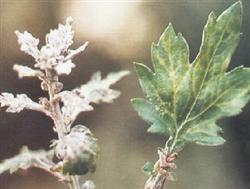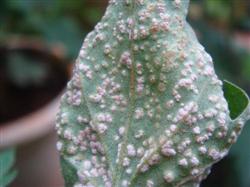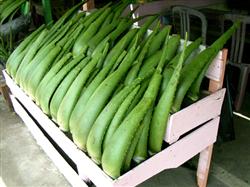Powdery mildew of chrysanthemum needs to be treated

From late August to October, chrysanthemum powdery mildew often occurs, which can lead to poor plant growth, leaf death, or even no flowering, which needs timely control. In cultivation, pay attention to cut off the dense and yellow branches and leaves, pull out the diseased plants, clean up the diseased leaves and fallen leaves, and burn them or bury them deeply. Planting should not be too dense, control soil moisture, increase ventilation and light transmission, and increase the application of phosphorus and potassium fertilizer to enhance plant disease resistance. Avoid applying too much nitrogen fertilizer. The basin soil or seedbed soil was sprayed and disinfected with 50% thiophanate methyl and 50% thiophanate at 1:1 and diluted at 600ml / 700 times. At the initial stage of the disease, it was sprayed with 1000 times of 50% Garinon wettable powder or 75% 13 morpholine emulsion, once every 10 days, 3 times in a row. When the disease is serious, spray with 1500 times of 15% trimethoprim emulsion or 800ml 1000 times of 70 methyl topiramate wettable powder, once every 7 mi 10 days, for 4 times in a row.
- Prev

Control technology of chrysanthemum white rust
Chrysanthemums are loved by people because of their beautiful, bright and fragrant flowers. Growing flowers can cultivate people's sentiment, enrich cultural life, and improve physical and mental health. At the same time, some varieties of chrysanthemums can be eaten or used in medicine, which can be said to kill two birds with one stone. But in the process of cultivating and breeding chrysanthemums, they often suffer from a variety of diseases.
- Next

Cultivation techniques of Edible Aloe
The first section summarizes aloe, which is a perennial succulent herb of the family Liliaceae. Originated and mainly distributed in the African continent, Yuanjiang in Yunnan Province of China has wild resources. The edible part of aloe is a succulent leaf with succulent juice, which is rich in nutrients and mainly has a large number of B-dimensional.
Related
- Fuxing push coffee new agricultural production and marketing class: lack of small-scale processing plants
- Jujube rice field leisure farm deep ploughing Yilan for five years to create a space for organic food and play
- Nongyu Farm-A trial of organic papaya for brave women with advanced technology
- Four points for attention in the prevention and control of diseases and insect pests of edible fungi
- How to add nutrient solution to Edible Fungi
- Is there any good way to control edible fungus mites?
- Open Inoculation Technology of Edible Fungi
- Is there any clever way to use fertilizer for edible fungus in winter?
- What agents are used to kill the pathogens of edible fungi in the mushroom shed?
- Rapid drying of Edible Fungi

